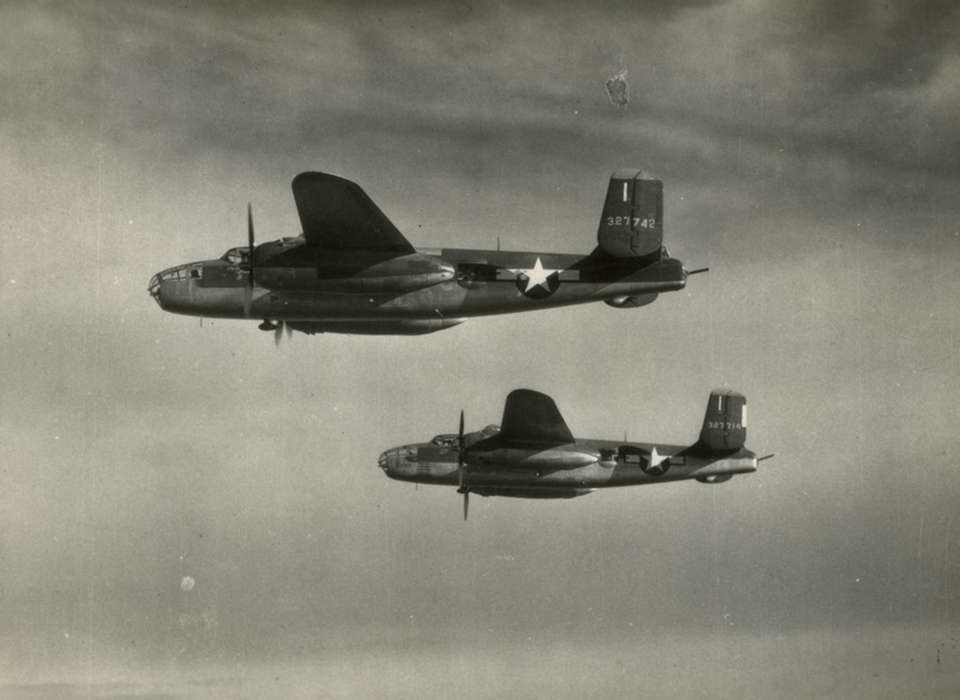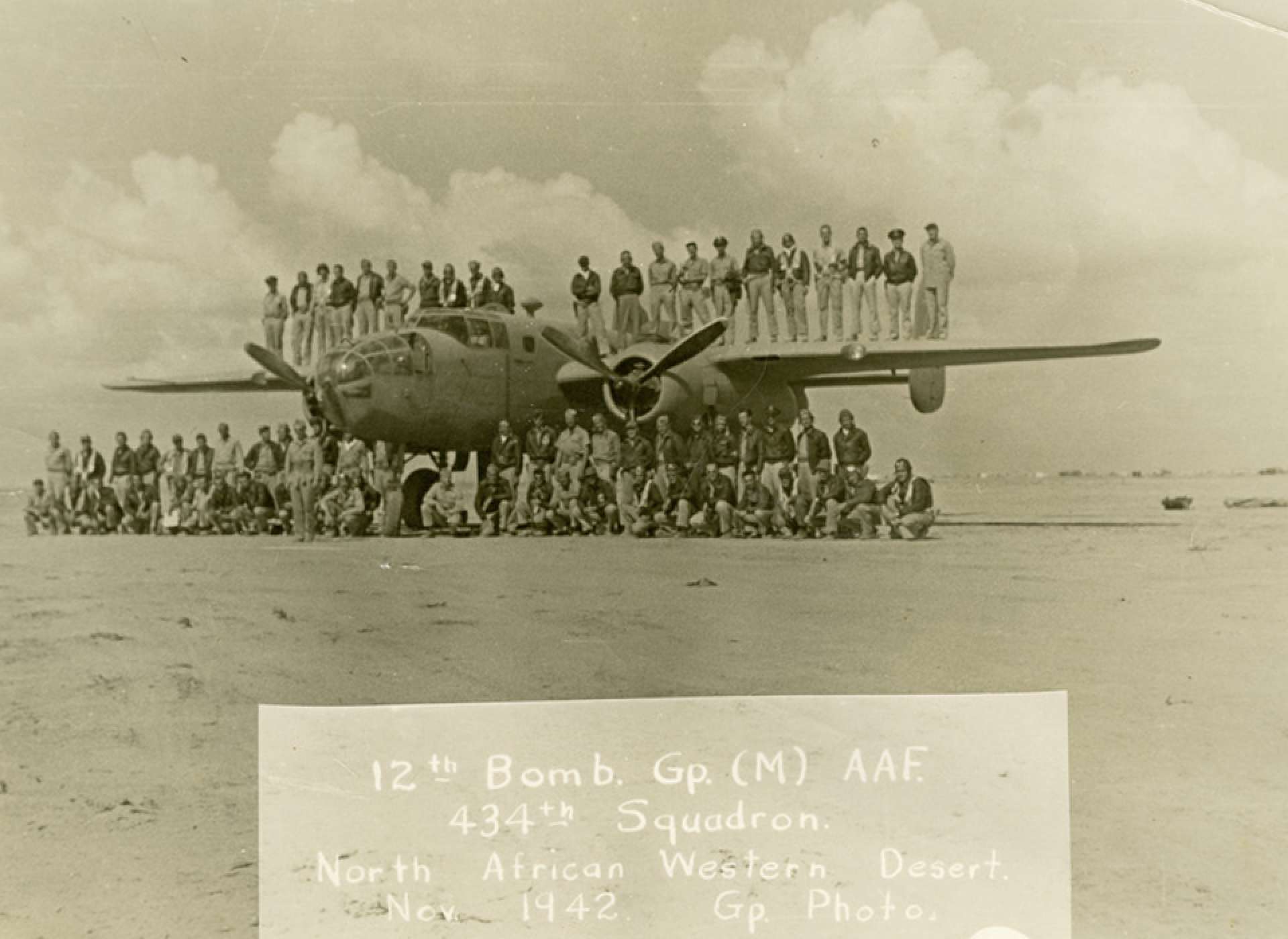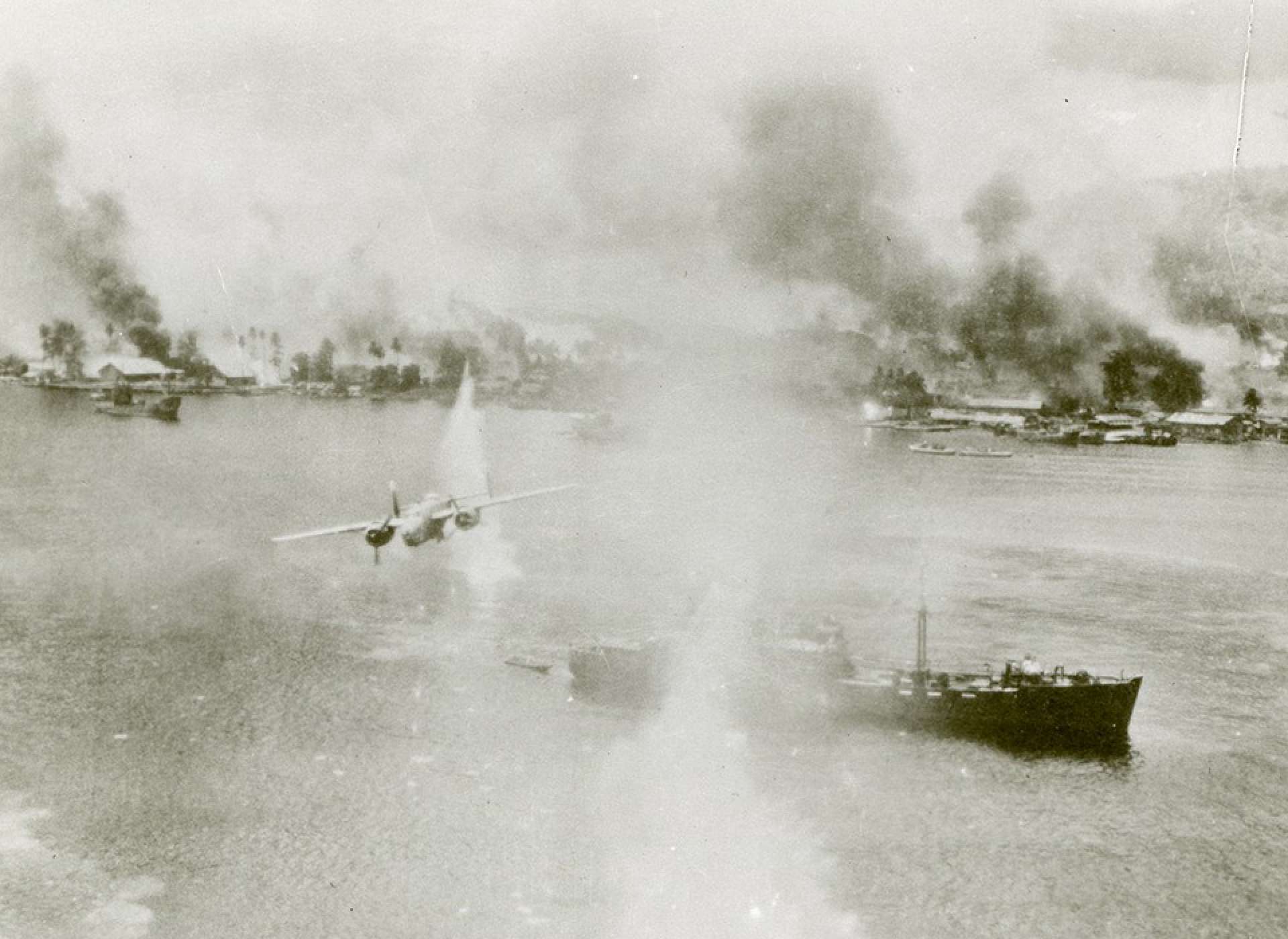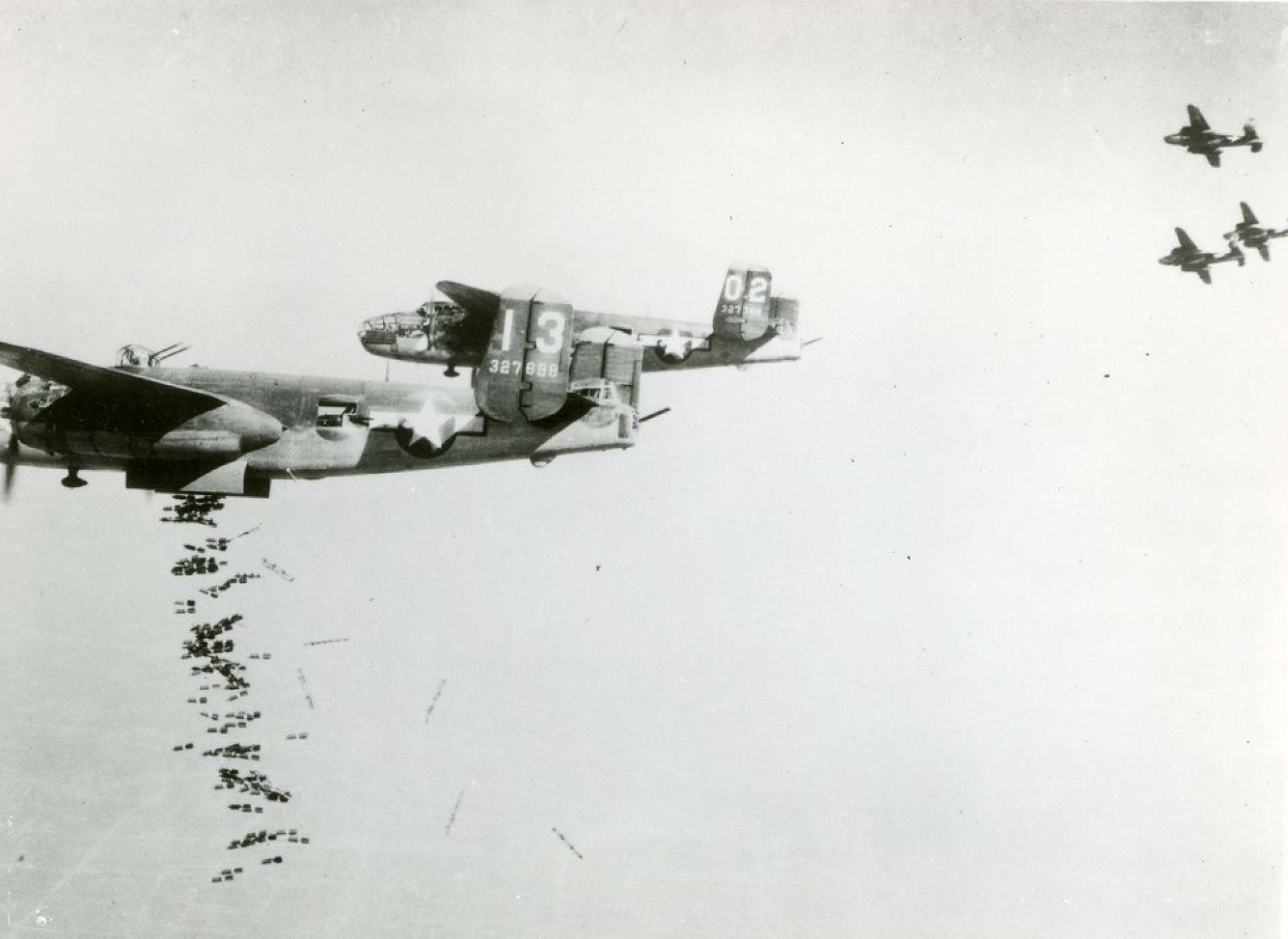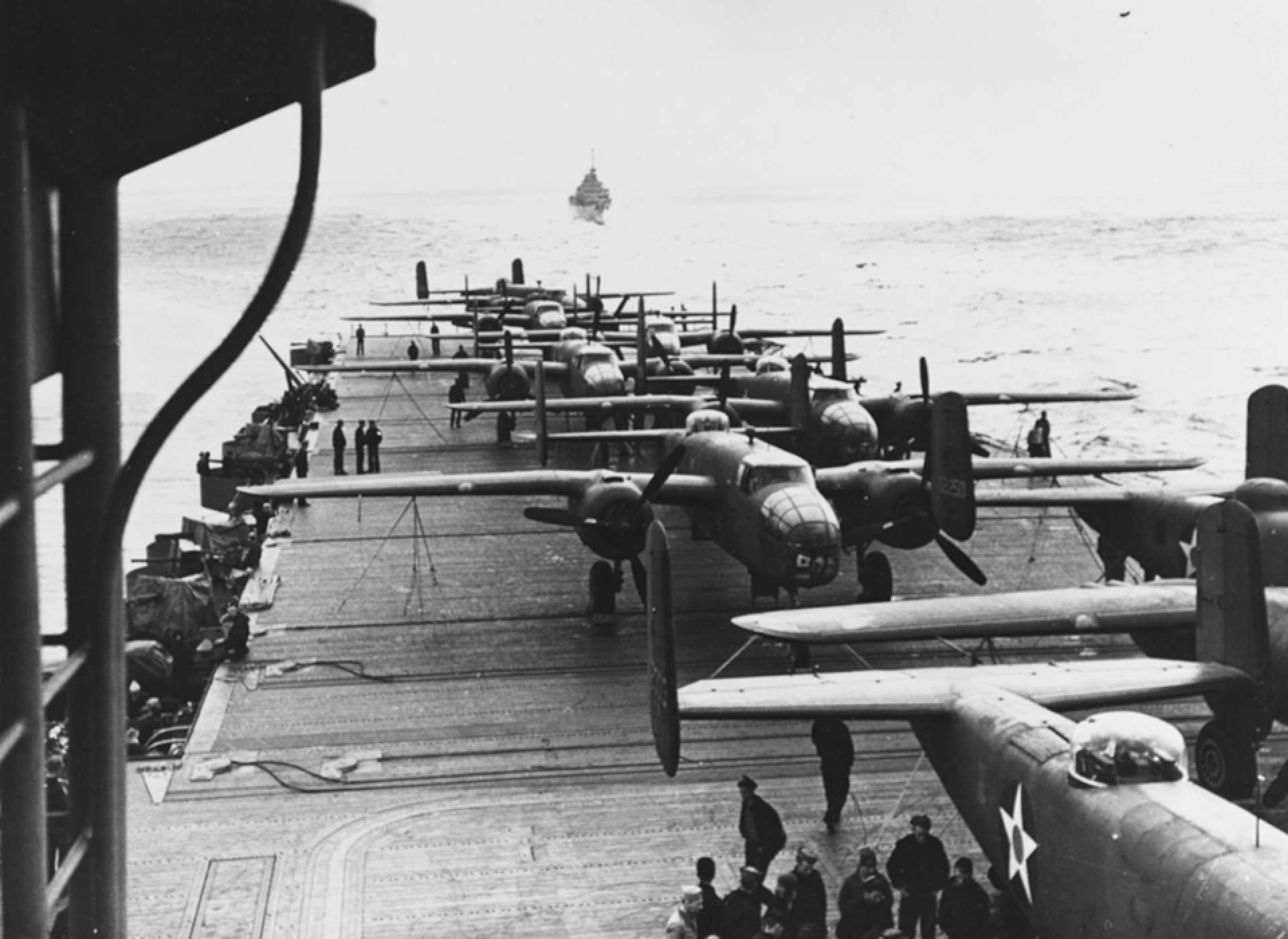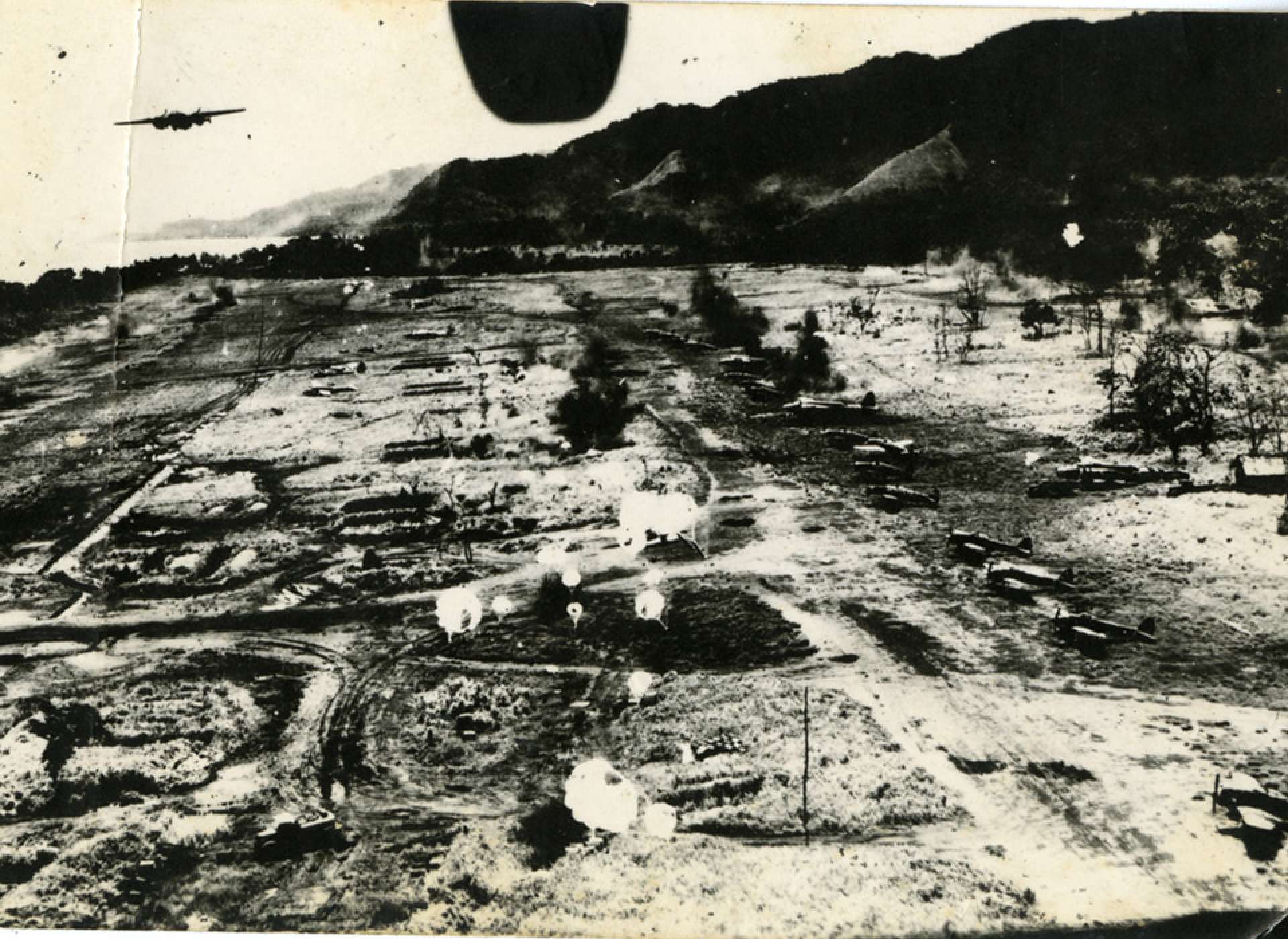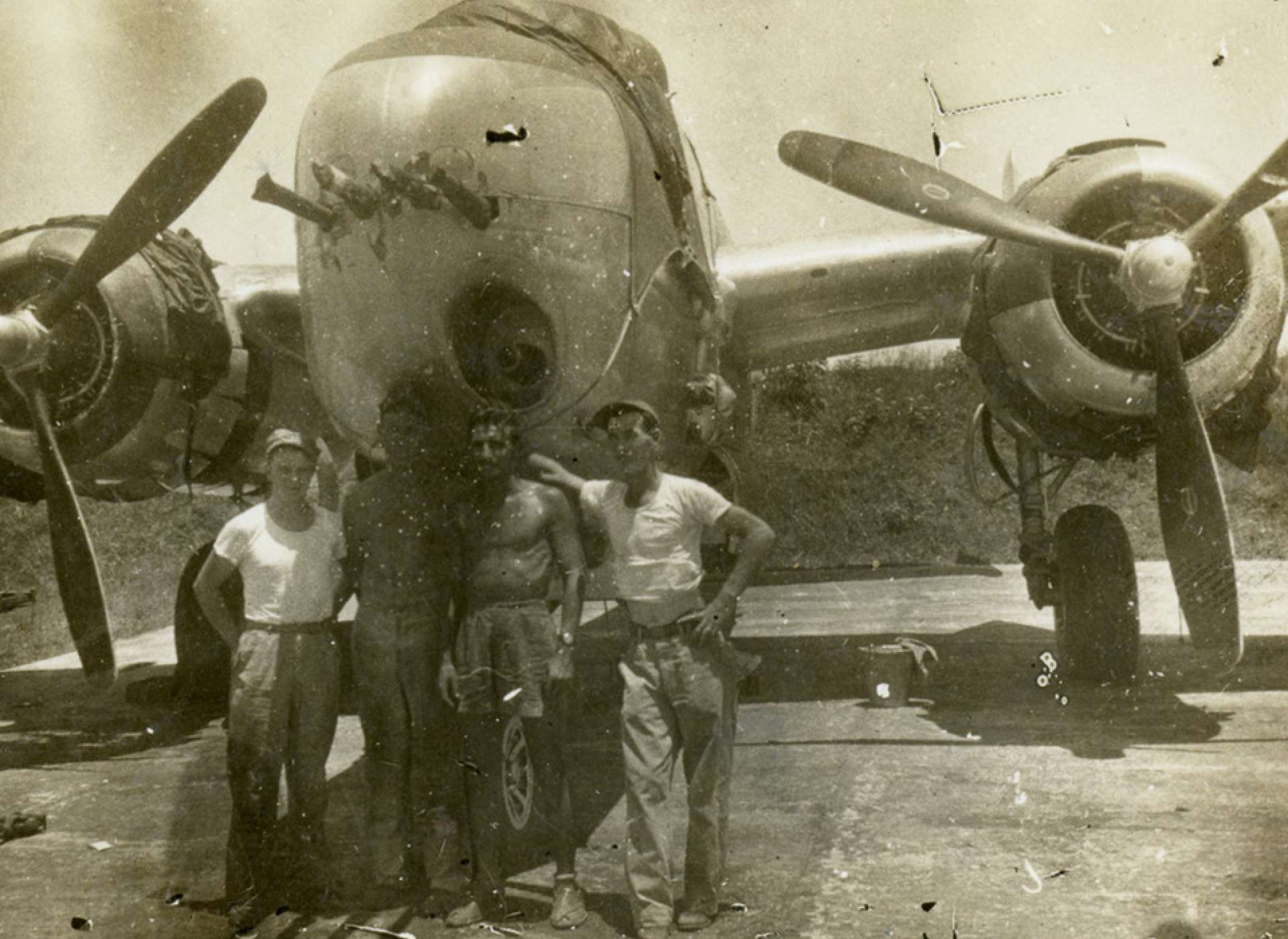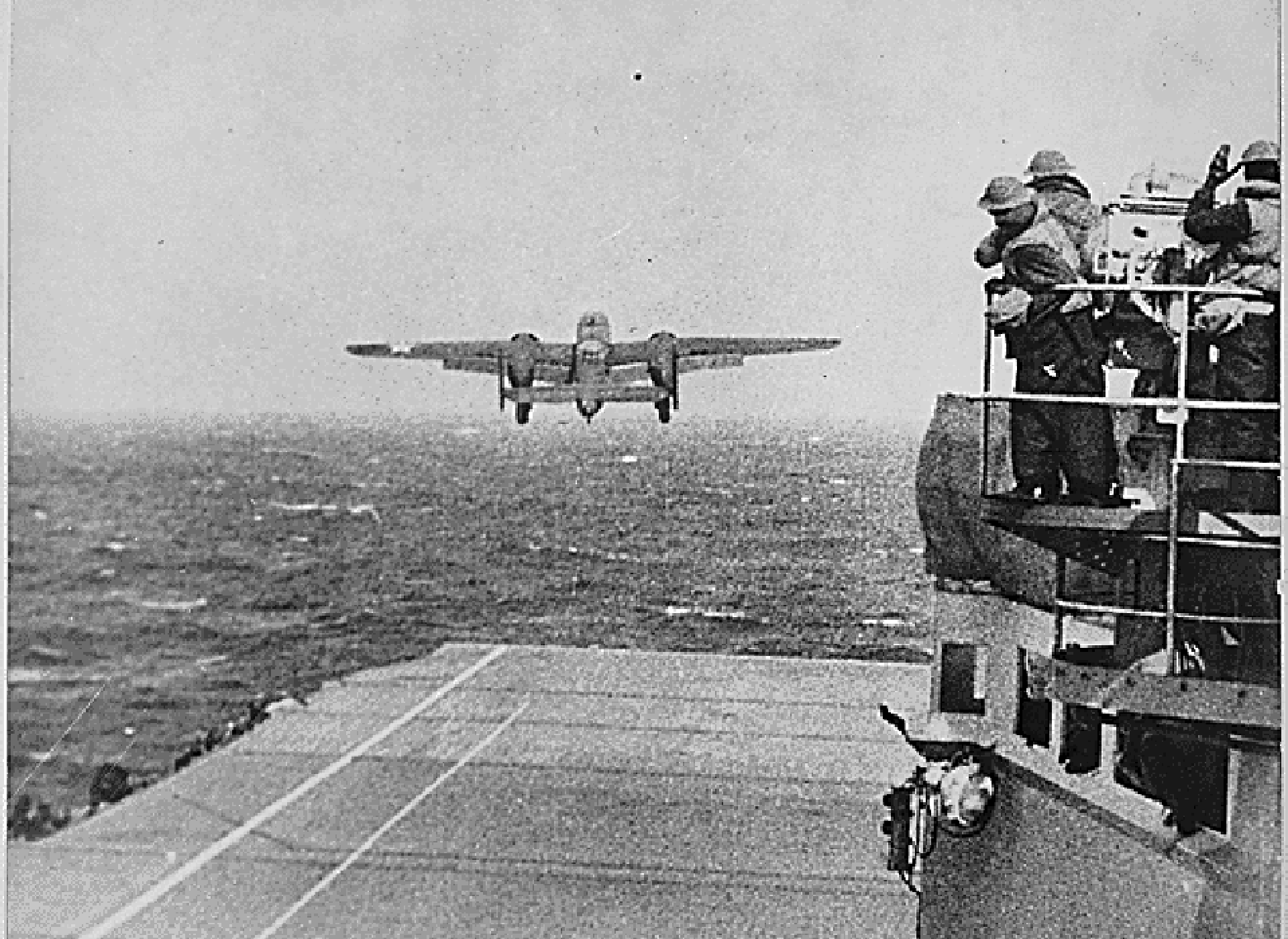Top Image: B-25 Mitchell bombers flying over Europe. Gift of Charles Szumigala, 2011.076.021
There are many iconic images from World War II, such as the raising of the American flag on top of Mount Suribachi or Americans wading to shore from a Higgins boat on D-Day. One other iconic image is the sight of a North American B-25 Mitchell bomber lifting off from the deck of the US aircraft carrier USS Hornet (CV-8) to strike the Japanese homeland on what became known as the “Doolittle Raid.” The story of the raid and the B-25 itself is a testament to the bravery and skill of the aircrew that flew this amazing aircraft.
Built by North American Aviation, the B-25 Mitchell was a medium bomber which could carry 3000 pounds of bombs at a max speed of 328 miles per hour, and carried six .50 caliber M2 Browning machine guns for protection. The B-25 was named after American General William “Billy” Mitchell who was an interwar proponent of aircraft and the development of US air-power. The plane first flew on August 19, 1940, and entered service in February 1941. While the B-25 was intended to bomb from medium altitude, because of its versatility, it ended playing a variety of roles such as low-level ground attacks and attacking vehicles and shipping.
The ultimate display of its versatility, however, came in April 1942, and the Doolittle Raid. After the attack on Pearl Harbor in December 1941, the United States did not have many options to strike back at the Japanese homeland. The idea for a plan to launch bombers from an aircraft carrier came from US Navy Captain Francis S. Low and was quickly approved. There were many concerns about the plan. Twin-engine bombers were not supposed to take off from aircraft carrier. Lieutenant Colonel James “Jimmy” Doolittle was placed in charge of the raid and quickly determined the B-25 would be the best plane to get the job done. The Hornet would not be able to launch her own planes with 16 B-25’s strapped to her decks, so the USS Enterprise (CV-6) would also go to provide air-cover. The success of the mission depended on secrecy. If the fleet was discovered, and the two invaluable aircraft carriers lost, there would not be much to stop the Japanese from rampaging across the rest of the Pacific.
-

Group photo of the 12th Bombardment Group with a B-25 Mitchell bomber in the North African desert in November 1942. Gift In Memory of L.A. Rogers, 2009.278.003
-

B-25 Mitchell bombers attacking naval installations and transport ships on the Japanese-held island of Rabaul. Gift In memory of Sgt. Lyle E. Eberspecher, 2013.495.1671
-

B-25 Mitchell bomber dropping its bombload on German positions near Lake Comacchio, Italy. Gift In memory of Sgt. Lyle E. Eberspecher, 2013.495.1689
-

B-25 Mitchell bombers tied down on the deck of USS Hornet (CV-8), while the carrier was en route to the launching point for the Doolittle Raid in April 1942. Courtesy Naval History and Heritage Command.
-

B-25 Mitchell bombers strafing and dropping parafrag bombs on a Japanese airfield on Hollandia in the Dutch East Indies. Gift In Memory of Benjamin Elmore Howze, 2012.278.051
-

A B-25J Mitchell bomber with four crewmen standing in front of the aircraft, 1944. Gift In Memory of L.A. Rogers, 2009.278.197
-

Take off of a B-25 Mitchell bomber from the deck of the USS Hornet (CV-8) during the Doolittle Raid on Japan on April 18, 1942. Courtesy National Archives.
The American ships managed to get within 650 miles of Japan before being discovered. Even though they were still 200 miles away from the preferred launching point, the order was given to launch. So, on April 18, 1942, 16 B-25 bombers took off from the Hornet and bombed targets in the Japanese cities of Tokyo, Yokohama, Nagoya, and Kobe. While the raid caused little damage to the Japanese, it was a huge propaganda victory for the Americans, and proved to the US public we could hit back. It also gave the Japanese an ominous view of what was to come.
The B-25 Mitchell went on to fly in every theater during the war. The B-25 was a rugged aircraft, with great survivability, and it was easy to fly which made it popular with aircrew. After the war, it was assigned to many American National Guard units before being placed out of service in the 1950s. Today, the B-25 remains a popular aircraft with many still flying at airshows and in private collections.
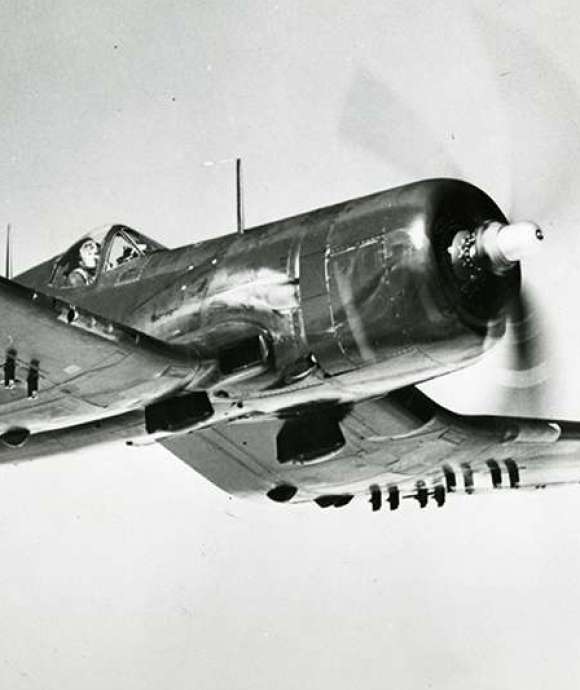
“Angels of Okinawa”: The F4U Corsair
One of the best fighters of World War II, the F4U Corsair tormented the Japanese from Guadalcanal until the end of the war.
James Linn
A New Orleans native, James Linn first became involved with the institution then known as The National D-Day Museum in 2001 as an eighth-grade volunteer on weekends and during the summer. Linn joined The National WWII Museum staff in 2014 and served as a Curator until 2020.
Cite this article:
MLA Citation:
APA Citation:
Chicago Style Citation:
